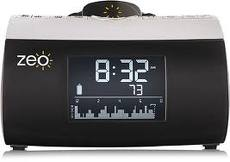 For anyone interested in learning more about dreaming, I have a simple piece of advice: keep a dream journal. Record your dreams on a regular basis, track their themes and patterns over time, and you will discover through your own experience many of the key psychological principles that shape the general process of dreaming.
For anyone interested in learning more about dreaming, I have a simple piece of advice: keep a dream journal. Record your dreams on a regular basis, track their themes and patterns over time, and you will discover through your own experience many of the key psychological principles that shape the general process of dreaming.
Beyond that, you may find your journal becomes a unique personal treasure—an invaluable source of insight into your most important concerns, activities, and relationships in the waking world.
You can start a journal at any time by making some retroactive entries. For example, write out the earliest dream you ever remember, even if it was just a tiny fragment or wispy image. There it is, the beginning of a dream journal!
 Have you ever had a dream of flying, or being chased, or having an intense sexual experience, or seeing someone who is dead appear as if they were alive again? Write those out, too. Do you remember any recurrent dreams? That’s very important to note, because recurrent dreams provide one of the best points of entry for a study of the long-term themes and patterns in your dreaming.
Have you ever had a dream of flying, or being chased, or having an intense sexual experience, or seeing someone who is dead appear as if they were alive again? Write those out, too. Do you remember any recurrent dreams? That’s very important to note, because recurrent dreams provide one of the best points of entry for a study of the long-term themes and patterns in your dreaming.
Recording especially memorable dreams from the past can be a good way of initiating a dream journaling practice going forward into the future. Regular journal-keepers typically place a pad of paper and a pen next to their bedside, and when they wake up with a dream in mind they immediately write it down. Because these bedside notes are often scrawled in semi-legible form, people will usually transcribe their dreams later in the day, into either better handwriting or a computer word processing system.
People today may want to use voice-to-text programs on their cell phones, which can be just as effective for those who know how to manage the technology. Whatever method is used, the main goal is to set up a smooth, friction-free process to record as much of the dream as can be remembered, as soon upon awakening as possible.
 It is worthwhile to include information about one’s sleep patterns in the journal, since the conditions of sleep often make a significant impact on the dreaming process. Ideally, each entry has the date, the location where you are sleeping, the time you go to sleep, the time you wake up, and a subjective assessment of the quality of your sleep (e.g., good, fair, poor). If you do not remember any dreams for that night, at least you have gathered some useful information about your sleep.
It is worthwhile to include information about one’s sleep patterns in the journal, since the conditions of sleep often make a significant impact on the dreaming process. Ideally, each entry has the date, the location where you are sleeping, the time you go to sleep, the time you wake up, and a subjective assessment of the quality of your sleep (e.g., good, fair, poor). If you do not remember any dreams for that night, at least you have gathered some useful information about your sleep.
If you do remember a dream, the key is to record it in as much detail as you can manage, including aspects of your internal experience (e.g., what you were thinking or feeling during the dream). When people narrate their dreams they typically leave out numerous details that seem too trivial or obvious to mention. Yet it is precisely these seemingly worthless details that often become highly significant in later explorations.
Take your time when initially recording a dream, and don’t worry if some aspects of the dream are vague, fragmentary, or impossible to describe. Just write them out as best as you can. All of these fragments can be sources of unexpected significance when you look at the dreams over time.
 Along with the dream report, a journal will typically include thoughts, memories, and associations that come to mind in relation to the dream. These comments can be brief or very extensive, depending on your time and inclination.
Along with the dream report, a journal will typically include thoughts, memories, and associations that come to mind in relation to the dream. These comments can be brief or very extensive, depending on your time and inclination.
I find it helpful to give each dream a title, as if it were a poem or short story. It’s a way of crystallizing in a phrase or image something important about the dream. The titles also make it easier to refer back to the dreams and sift through the series for recurrent threads of meaning.
One of the greatest values of a dream journal is the way it grows in power and depth over time. The ever-expanding pool of dreaming experience creates an evolving network of meaningful connections.
 Carl Jung, one of the pioneers of Western dream psychology, proposed back in the 1930’s that a series of dreams can provide an extremely useful means of exploring an individual’s life. In his essay titled “Individual Dream Symbolism in Relation to Alchemy,” he presented his analysis of “over a thousand dreams and visual impressions coming from a young man of excellent scientific education.” (116) Jung described his method in these terms:
Carl Jung, one of the pioneers of Western dream psychology, proposed back in the 1930’s that a series of dreams can provide an extremely useful means of exploring an individual’s life. In his essay titled “Individual Dream Symbolism in Relation to Alchemy,” he presented his analysis of “over a thousand dreams and visual impressions coming from a young man of excellent scientific education.” (116) Jung described his method in these terms:
“[H]ere we are not dealing with isolated dreams; they form a coherent series in the course of which the meaning gradually unfolds more or less of its own accord. The series is the context which the dreamer himself supplies. It is as if not one text but many lay before us, throwing light from all sides on the unknown terms, so that a reading of all the texts is sufficient to elucidate the difficult passages in each individual one… Of course the interpretation of each individual passage is bound to be largely conjecture, but the series as a whole gives us all the clues we need to correct any possible errors in the preceding passages.” (119-120, italics in original)
Jung’s insight has been actively explored by many people who study dream series over time, and in a future post I will say more about their findings.
For now, I will leave you with this thought: keeping a dream journal is a priceless gift to your future self.
Reference:
C.G. Jung, Dreams (trans. R.F.C. Hull), Princeton University Press, 1974.
This post first appeared in Psychology Today, May 27, 2017.

